What are the types and varieties of oats?
More than 50 varieties of seed oats are grown in Russia. They differ in a number of parameters, among which grain size, yield and optimal growing conditions are crucial.
Read on to learn about the difference between oat varieties, as well as how to choose the most suitable one for planting.
Description and characteristics of oat crop
Oats were developed by humans about 4,500 years ago. Initially, the crop was used exclusively as feed for horses in the north and east of Europe. The first edible varieties of oats appeared much later.
This is interesting. Until now, 95% of the collected oats are used as animal feed, and only the remaining 5% are packaged for sale in stores and used in the food industry.
Oat grains contain:
- B vitamins;
- cobalt;
- manganese;
- zinc;
- starch - 40%.
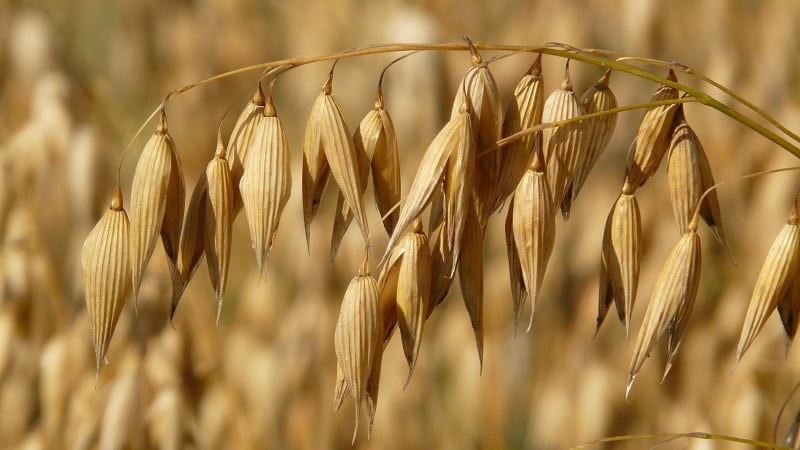
BZHU oatmeal:
- proteins - 15-18%;
- fats - 4%;
- carbohydrates - 60%.
Calorie content depending on the processing method is 62-370 kcal.
White oat grains have the greatest value. Behind him comes black and fodder - gray and red. Forage oats (oat straw and hulls) are considered a coarse but nutritious crop.
What types of oats are there?
There are from 16 to 22 types of oats. Among them there are cultivated and wild ones (wild oats). Wild oats often grow like weeds, littering fields of cereal crops.
90% of the world harvest comes from oats (Avena sativa).
Planted oats are divided into:
- winter - resistant to cold, produces early harvests;
- spring - grown primarily as a fodder crop, unpretentious to climatic conditions, can produce high yields in temperate climates;
- filmy - received this name due to the fact that its grains are covered with a dense opaque film;
- naked - when ripening, the seeds become “naked”, that is, they lose their film.
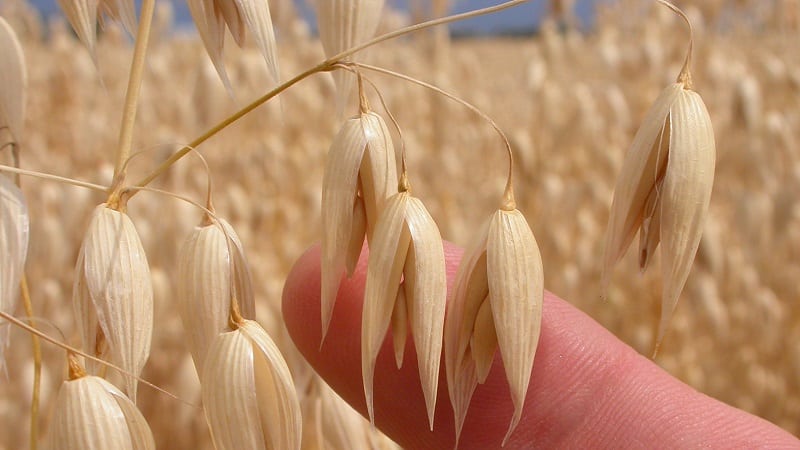
Grains naked forms oats have thin scales, which easily lags behind during processing, the filmy grains are hard and dense.
Important! The color of oat grains is not constant; they tend to turn yellow in wet weather, which can make it difficult to determine the variety.
Varieties of oats depending on type
All varieties described below are seed varieties. The grain of oats, unlike other species, has strong pubescence. Cultivated varieties of seed oats can be identified by the presence of horseshoes - small depressions in the places where the grains are attached to the branches. They help the mature grain to separate from the plant. The leaf blade has a small jagged tongue without ears. The inflorescences are panicle-shaped, each spike has one or several flowers.
Oats are resistant to low temperatures, but do not tolerate heat well. It requires abundant watering and tolerates excess moisture in the soil well. Lack of moisture causes more harm; resistance to this factor varies among different varieties.
Oats are undemanding to soil and grow well on black soil and sandy loam., but does not tolerate excess salt well. Needs nitrogen fertilizers. The best predecessors are legumes, corn and potatoes.
This is interesting:
The fundamental difference between oats and barley
The benefits and harms of oatmeal for the body
Hercules, oatmeal and oats - are they the same thing or is there a difference
Winter varieties
The main feature of winter varieties is that the duration of the full ripening cycle together with the resting phase, it can last up to 250 days. Unlike other varieties, seeds are planted in the second half of autumn, shortly before the first frost.
An example of a winter oat variety - Antey: grows up to 100 cm, produces grain yield up to 6 c/ha and dry hay up to 4 c/ha.
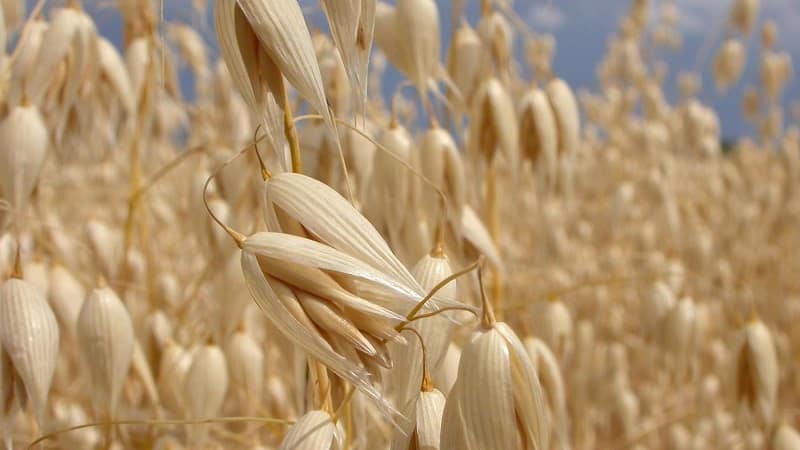
Spring varieties
Spring varieties are sown in early spring, immediately after the snow meltswhen the ground is still saturated with moisture. In such conditions, the grains swell quickly and tolerate temperatures from 0°C and even night frosts well.
Among spring varieties worthy of attention:
- Barguzin - has large grains with thick scales, the total weight of 1000 grains is 40 g. The duration of the growing season is approximately 95 days. Fertility 35 c/ha. Shows high resistance to drought.
- Dogoy - has stems up to 100 cm high, and dark green leaves. Resistant to diseases. The growing season lasts longer than usual - up to 100 days. Weight of 1000 grains is 35 g. Productivity is low - up to 30 c/ha.
- Geser - a tall variety, poorly resistant to dry weather and diseases. The ripening period of the crop is 85 days. Productivity up to 50 c/ha. The weight of 1000 grains exceeds 35 g.
Hulless oats
Hulless oats are equally suitable for people and for feed needs. The three most common varieties of naked oats are:
- Belarusian naked - has thick stems and elongated grains rich in protein. The grains are light, the weight of 1000 grains is only about 25-28 g. It has increased immunity to many diseases. Fertility up to 50 c/ha.
- Lefty - erect, grows straight up. The growing season is relatively short - about 2 months. The scales are covered with a waxy coating. The grains are medium-sized, contain a lot of protein, weight 1000 pieces. reaches 30 g. Productivity is below average, up to 40 c/ha.
- Solomon - resistant to dry weather and diseases, has tall, erect bushes. Productivity up to 40 c/ha. The ripening period is up to 90 days. Weight of 1000 grains - up to 28 g.
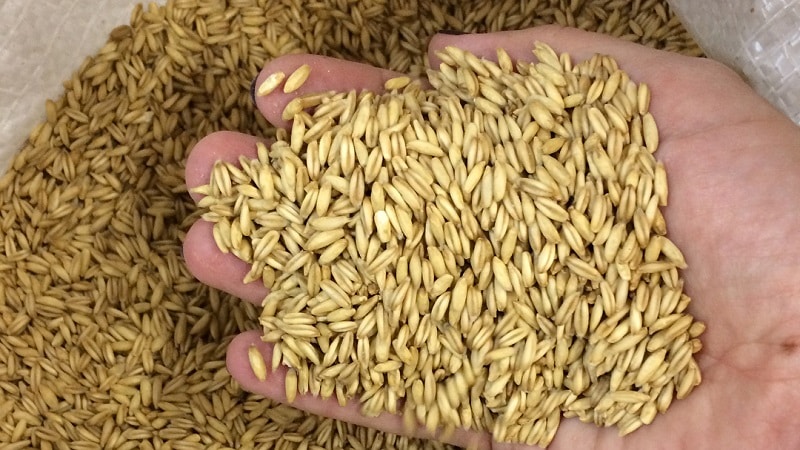
Filmy oats
There are filmy varieties:
- paniculate - characterized by horizontal attachment of spikelets and spreading shoots;
- single-maned - the branches are pressed to the stem, attached evenly.
Filmy varieties often have high yields. Popular among them:
- Fighter - upright growing, with large grains. The spikelets look down, their surface is covered with fine fluff. Drought-resistant, susceptible to many diseases, demanding care.
- Mascot - highly resistant to diseases, especially smut, and dry weather. The grains contain a lot of protein and have a thickened and elongated shape. The growing season is up to 75 days. The weight of 1000 grains reaches 40 g. Productivity is up to 75 c/ha.
- a lion - a variety with bushes of medium height, about 60 cm. The growing season is up to 90 days. Susceptible to most diseases. Productivity up to 60 c/ha. Weight of 1000 grains up to 40 g.
The best productive oat varieties
High-yielding oat varieties:
- Merlin - mid-season annual. It has average resistance to drought and is prone to lodging. The ripening period is 75-95 days. Susceptible to fungal diseases and infections. The grain size is smaller than average, the weight of 1000 pieces is 30-32 g. The maximum yield is 80 c/ha, the average is 35-40 c/ha.
- Argamak - mid-season variety with a yield of up to 90 c/ha. Resistant to lodging. The dense white seeds of high quality contain about 15% protein. Weight of 1000 grains - 30-36 g.
- Trump - mid-early white-grain variety. Productivity up to 84 c/ha. The stems and leaves are covered with a clearly visible coating. Resistant to disease and drought. The grains are large, the weight of 1000 pieces is 34-37 g.
- Gait - mid-season variety with a growing season of 80-90 days. The average yield is 35-40 c/ha, the record yield is 80 c/ha. The leaves are covered with a thin waxy coating.
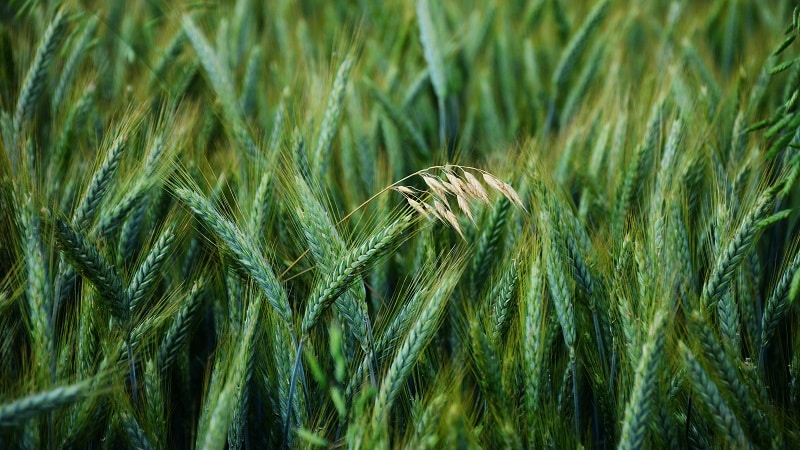
Tips and tricks for choosing a variety
When choosing the right oat variety, pay attention to the following factors::
- climatic conditions in your area - temperature, amount of precipitation, duration of the warm season;
- the purpose for which you intend to grow oats - food, animal feed, etc.;
- required mass of seed and straw harvest;
- duration of the growing season;
- infections and pests common in your area.
If your region has a long summer, the varieties Allur, Dogon, Barguzin and Solomon are suitable for you. In short - Lefty and Talisman. If you live in a dry area, Kozyr, Solomon, Barguzin and Talisman are suitable. If you want to grow large grains, choose Talisman, Trump and Lion.
Conclusion
The characteristics of different varieties of oats described in the article allow you to choose the ideal crop for food purposes or for livestock feed, for warm or temperate climates, long or short summers, for wet and dry regions.